Hong Kong is familiar to most people as a nexus of capitalism and is often portrayed as the world’s busiest city, where individualism and the rule of the dollar note have always gone unquestioned. However, it is actually a much more complex social and historical hub than some of these portrayals would have you believe and it has undergone huge changes in the last 100 years (but somewhat ironically less real change since its handover from the British to the Chinese in 1997 than you might think!). Hong Kong simultaneously represents everything from the last vestiges of colonial government to a beacon of ‘freedom’ on the fringe of a rapidly-evolving China, but these simple labels don’t really explain the current sociopolitical dynamic.
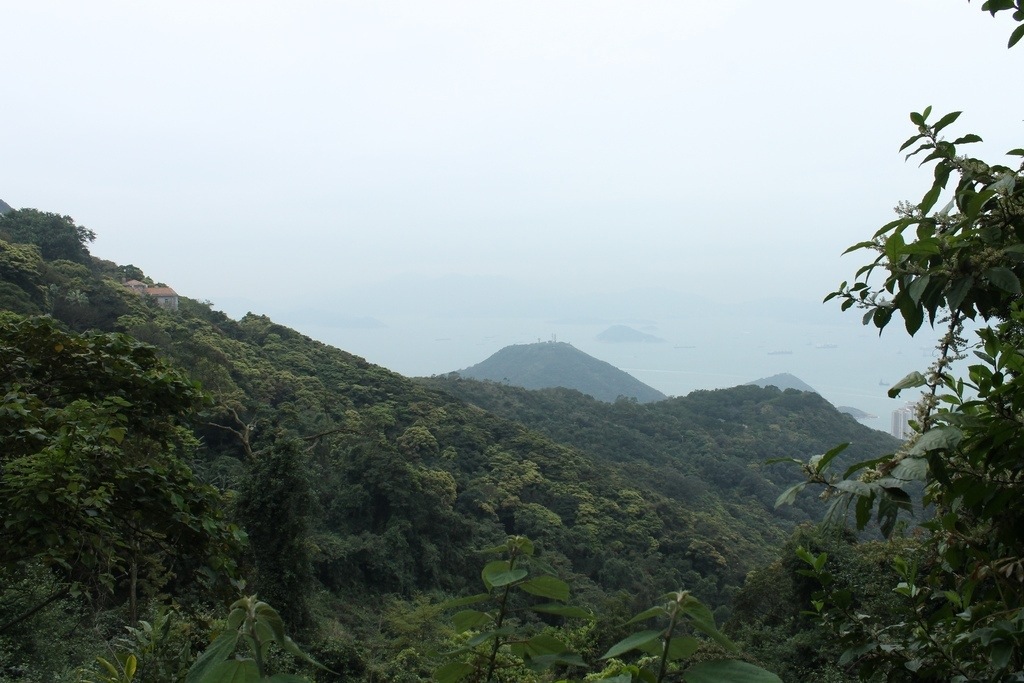 In the context of our journey around the world, Hong Kong was also special because it marked another turning point for us. Not only was it the first familiar territory we’d encountered since America, but it would also be the first time I had seen my parents after eight months on the road and a Christmas aboard a cargo ship.
In the context of our journey around the world, Hong Kong was also special because it marked another turning point for us. Not only was it the first familiar territory we’d encountered since America, but it would also be the first time I had seen my parents after eight months on the road and a Christmas aboard a cargo ship.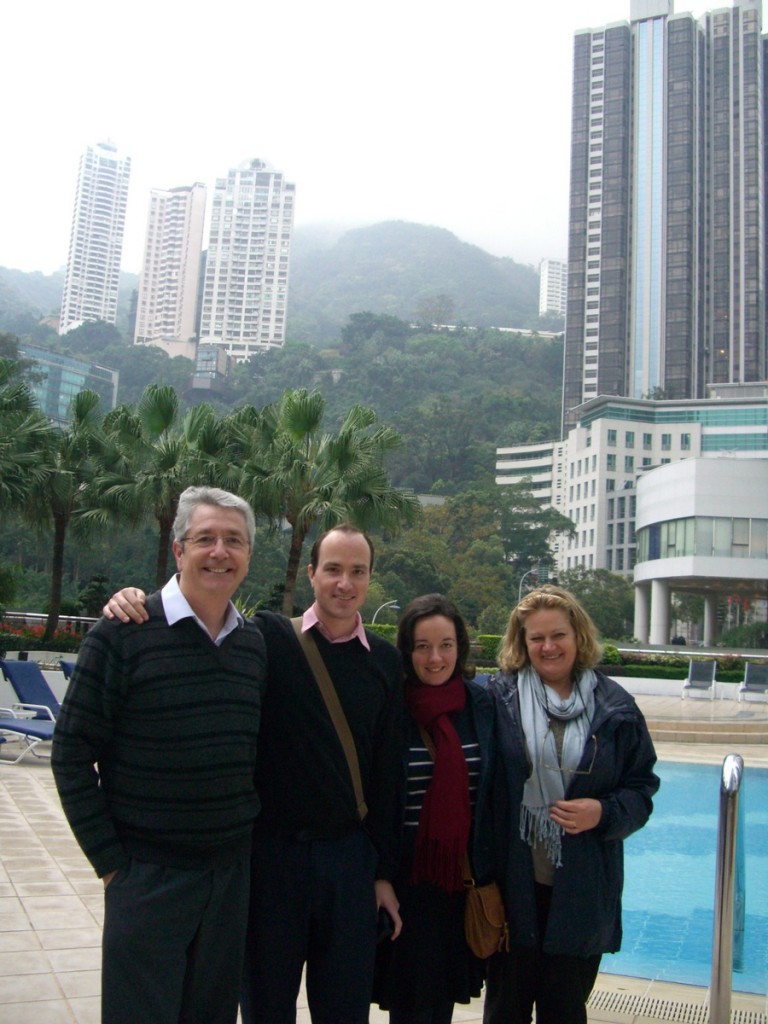 Another reason for my excitement on arriving was that my family lived in Hong Kong for about five years when I was a child. My dad was offered a job there in the ’90s and we eventually moved over to live in 1992, during the last few years before the island was handed back to China in 1997. What was originally supposed to be a one-year secondment became a five-year stint abroad on my parents’ part and a defining point in my childhood. As a young boy, I experienced a very ‘bubble wrapped’ view of the island’s culture, but I was lucky enough to explore some unsung parts of Hong Kong life that, like the city itself, are now changing so fast they have almost become unrecognisable. Coming back to those same places as an adult and re-parsing my old memories was something that I had been looking forward to since we set off from England. We had a lot of catching up to do…
Another reason for my excitement on arriving was that my family lived in Hong Kong for about five years when I was a child. My dad was offered a job there in the ’90s and we eventually moved over to live in 1992, during the last few years before the island was handed back to China in 1997. What was originally supposed to be a one-year secondment became a five-year stint abroad on my parents’ part and a defining point in my childhood. As a young boy, I experienced a very ‘bubble wrapped’ view of the island’s culture, but I was lucky enough to explore some unsung parts of Hong Kong life that, like the city itself, are now changing so fast they have almost become unrecognisable. Coming back to those same places as an adult and re-parsing my old memories was something that I had been looking forward to since we set off from England. We had a lot of catching up to do…
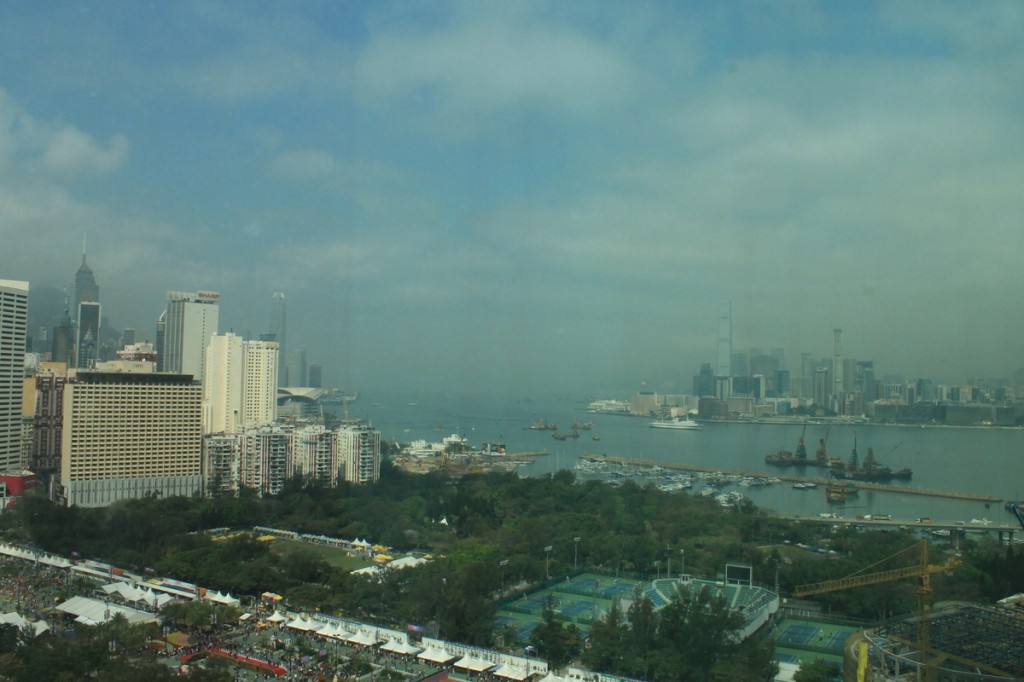 We arrived at Kowloon Tong station in the early morning and had some time to wash, rest and recover once we reached our hotel (the shiniest we’d stayed in for quite some time). Most people in Hong Kong live in high-rise apartments, so it didn’t seem strange to me that we would be on the 23rd floor but it was probably the highest above sea level we had been since visiting the Nepenthe restaurant in California all those months ago. Black Kites circled outside the window, riding thermal currents to scan the grassland of one of Hong Kong’s inner city parks for prey. My parents arrived a little time after us and some emotionally charged greetings followed their arrival in the hotel’s wine bar. We had a lovely evening watching the sunset over the hazy city while reminiscing, catching up and deciding how we wanted to spend the next 10 days.
We arrived at Kowloon Tong station in the early morning and had some time to wash, rest and recover once we reached our hotel (the shiniest we’d stayed in for quite some time). Most people in Hong Kong live in high-rise apartments, so it didn’t seem strange to me that we would be on the 23rd floor but it was probably the highest above sea level we had been since visiting the Nepenthe restaurant in California all those months ago. Black Kites circled outside the window, riding thermal currents to scan the grassland of one of Hong Kong’s inner city parks for prey. My parents arrived a little time after us and some emotionally charged greetings followed their arrival in the hotel’s wine bar. We had a lovely evening watching the sunset over the hazy city while reminiscing, catching up and deciding how we wanted to spend the next 10 days.
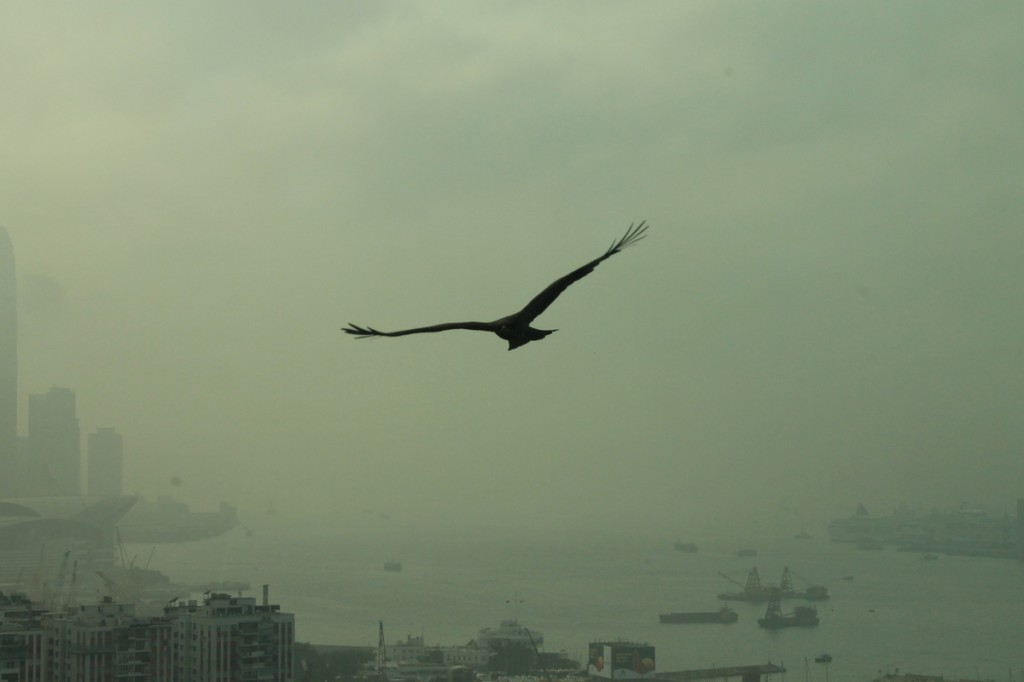 Not surprisingly, the hit list included many excursions to old places from my childhood past as well as some of the places that we never took the time to visit when we used to live on the island all those years ago. While it was something of a whistlestop tour, we took time to reflect on the contrast between life in Hong Kong, our time in South East Asia and life back home.
Not surprisingly, the hit list included many excursions to old places from my childhood past as well as some of the places that we never took the time to visit when we used to live on the island all those years ago. While it was something of a whistlestop tour, we took time to reflect on the contrast between life in Hong Kong, our time in South East Asia and life back home.
Star Ferry
 We took a number of journeys on the Star Ferry while we were in Hong Kong. This iconic ferry service has been running since 1888, and the ferries currently in service are an average of 40 years old. They are still more than seaworthy and are actually quite a fast way to get between the sides of the Harbour, if you’re already in the city centre.
We took a number of journeys on the Star Ferry while we were in Hong Kong. This iconic ferry service has been running since 1888, and the ferries currently in service are an average of 40 years old. They are still more than seaworthy and are actually quite a fast way to get between the sides of the Harbour, if you’re already in the city centre.
Nothing seems to have changed here at all since I lived in Hong Kong, except for further building development/land reclaim on the harbour and the introduction of a comically named Oyster-style system called the “Octopus” card which you can use to buy your ticket.
Hong Kong Cricket Club and Hong Kong Country Club
Nestled on the mountain along the Wong Nai Chung Gap Road, which separates the harbour front from the secluded southern parts of Hong Kong island, the cricket club used to be a meeting house for all kinds if expatriates, from socialites to sports enthusiasts. On the surface, it’s not much different than a glorified leisure centre, but its walls are brimming with quirky historical artefacts if you care to look a bit closer. The cricket pitch was originally constructed right on the waterfront, surviving four years of Japanese occupation in 1941-45 and decades of social change in Hong Kong, but later moved up the mountain in 1975 as the increasing price of land made the club’s presence in such a prime seafront location untenable. The new pitch has probably one of the best views of any in the world, the dance of Hong Kong Harbour playing itself out in miniature in the distance below.
Inside the pavilion is a replica 17th century wooden-beamed British pub, originally built by the harbour-side and then moved beam by beam up to the new location at Wong Nai Chung. The interior reminded us of a quiet country pub in deepest Sussex, each wall stacked with commemorations of old matches between now-extinct colonial power bases such as Burma, Macau and Singapore, as well as newer commemorations of matches between Hong Kong and minor county sides from the UK or Australia (Hong Kong unfortunately usually ending up as the losing side). 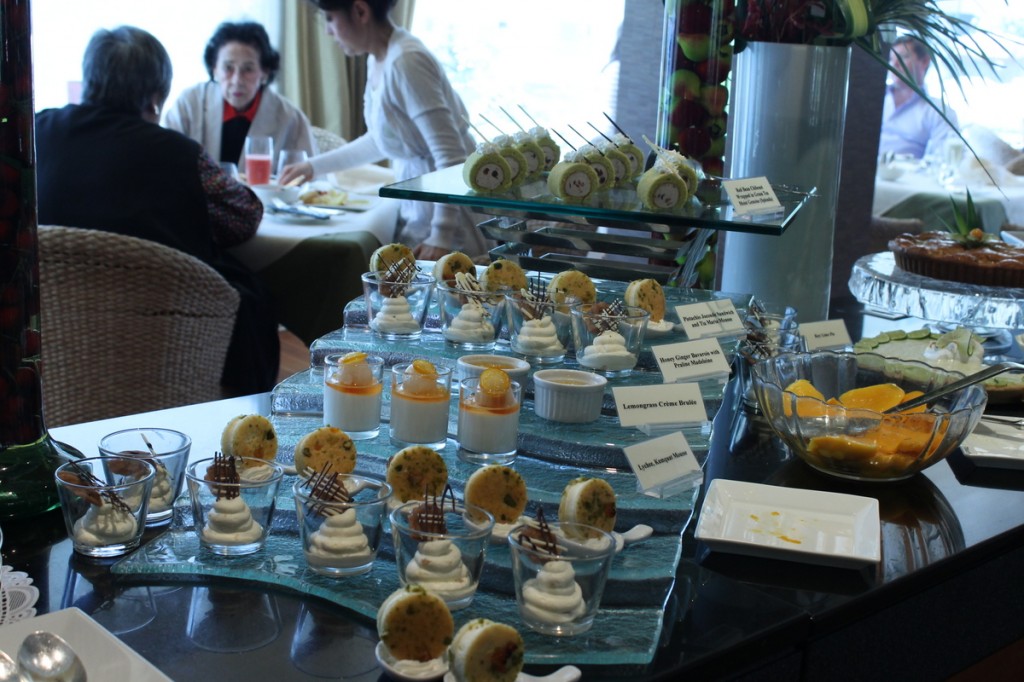 Other relics of the bygone age of British influence in Asia and of the resistance movement during the Japanese occupation can also be found in the room that used to be a relatively large video rental library when I was young. Other rooms house more recent celebrations as new histories are forged on its cricket pitches. This relic of British governance over Hong Kong has been embraced by the city alongside other clubs such as the Helena May women’s club (which was running its spring tombola and tea party when we visited) and the Hong Kong Country Club which recently celebrated its 100th year.
Other relics of the bygone age of British influence in Asia and of the resistance movement during the Japanese occupation can also be found in the room that used to be a relatively large video rental library when I was young. Other rooms house more recent celebrations as new histories are forged on its cricket pitches. This relic of British governance over Hong Kong has been embraced by the city alongside other clubs such as the Helena May women’s club (which was running its spring tombola and tea party when we visited) and the Hong Kong Country Club which recently celebrated its 100th year.
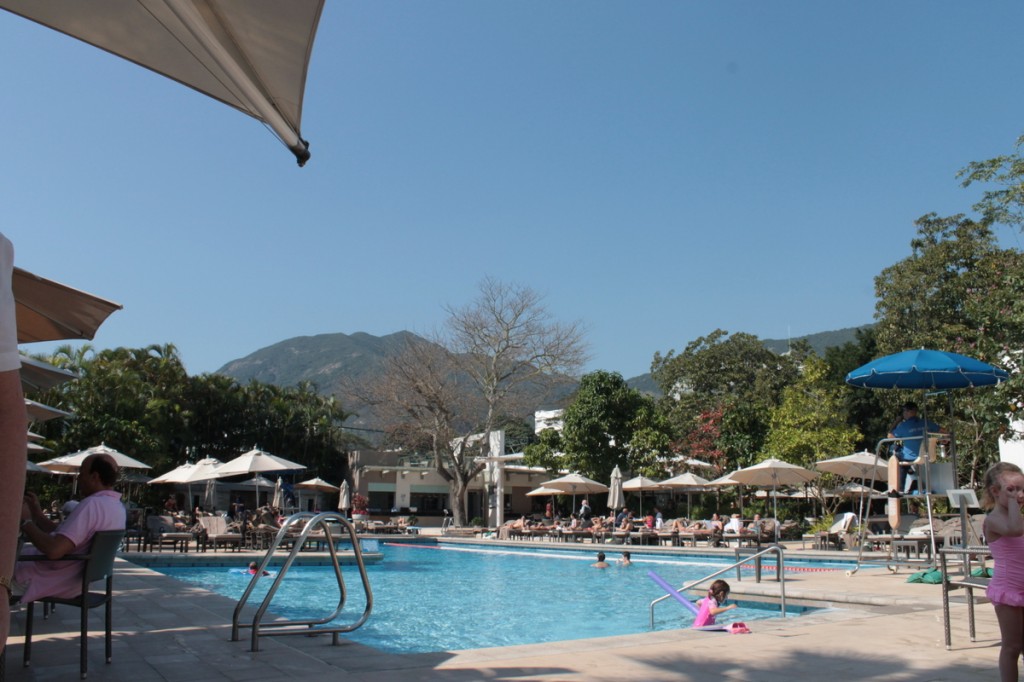 The country club is slightly out of the city near Ocean Park and is a relaxed, family-oriented (if slightly Desperate Housewives-ish) meeting place with a secluded pool, a cocktail bar overlooking Causeway Bay, and a few decent restaurants. When I was younger a couple of goats helped to manicure the lawns but they are now long gone and only the old climbing frame and green swing boat remained – surprisingly still in good working order!
The country club is slightly out of the city near Ocean Park and is a relaxed, family-oriented (if slightly Desperate Housewives-ish) meeting place with a secluded pool, a cocktail bar overlooking Causeway Bay, and a few decent restaurants. When I was younger a couple of goats helped to manicure the lawns but they are now long gone and only the old climbing frame and green swing boat remained – surprisingly still in good working order!
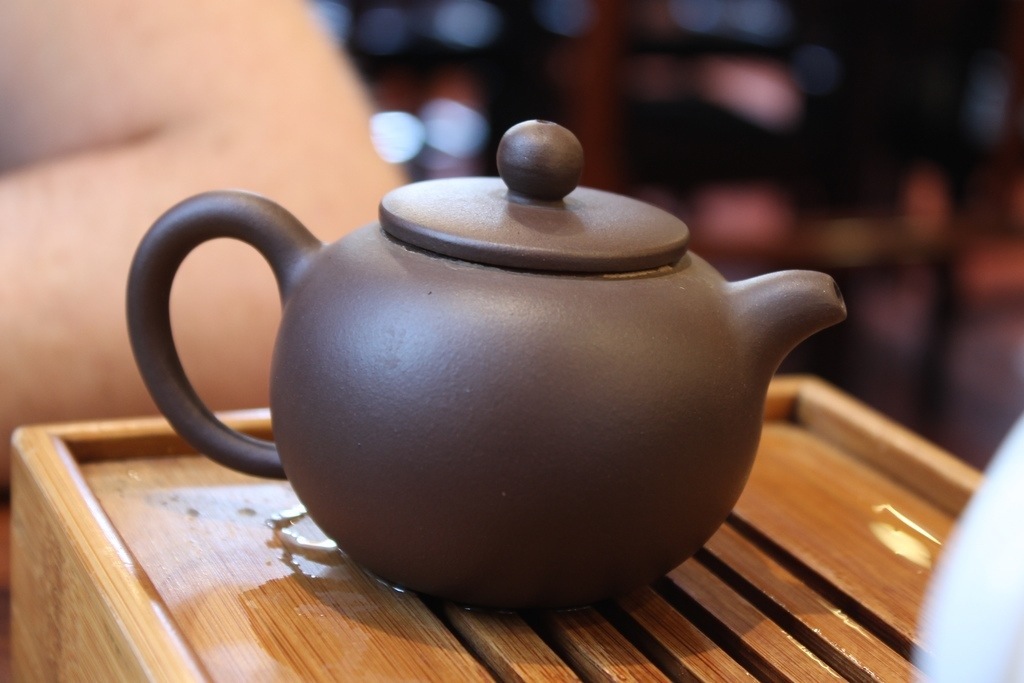
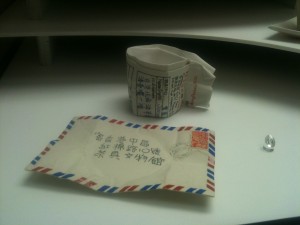 Nestled in the middle of Hong Kong Park, this little museum was one of the little gems we found when exploring the area near the Mid-Levels. A place of relative peace and quiet in the hustle and bustle of the city, we explored halls of eccentric tea pottery and were first introduced to the ways of the Gongfu tea ceremony by a video of the resident Professor of Tea (serious business in China and Hong Kong!). The tea ceremonies are traditional forms of both mindful meditation and perfect tea brewing, a set of steps each with its own name and backstory in Chinese lore (my favourite part being “the dragon rolls the ball”, an intricate movement of the fingers where teacups are washed one at a time by rolling them between three fingers in a cup of boiling water).
Nestled in the middle of Hong Kong Park, this little museum was one of the little gems we found when exploring the area near the Mid-Levels. A place of relative peace and quiet in the hustle and bustle of the city, we explored halls of eccentric tea pottery and were first introduced to the ways of the Gongfu tea ceremony by a video of the resident Professor of Tea (serious business in China and Hong Kong!). The tea ceremonies are traditional forms of both mindful meditation and perfect tea brewing, a set of steps each with its own name and backstory in Chinese lore (my favourite part being “the dragon rolls the ball”, an intricate movement of the fingers where teacups are washed one at a time by rolling them between three fingers in a cup of boiling water).
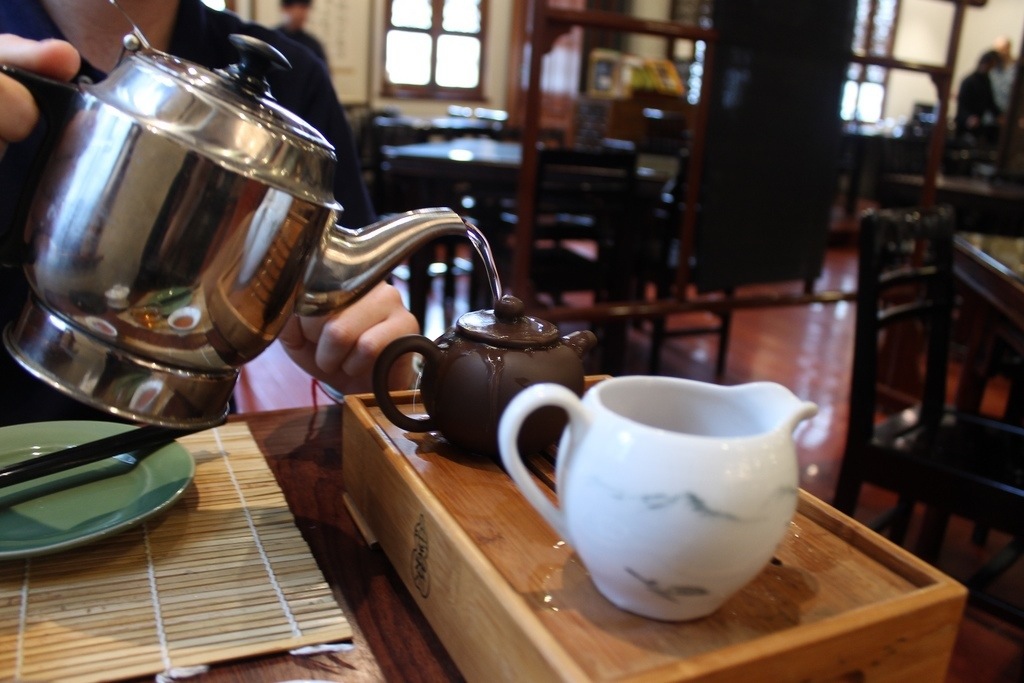 Adjoining the museum is a beautifully decorated tea house, where we sampled some of the finer Chinese leaf teas and were able to practice some of the tea rituals we had studied earlier (shown above is the traditional way of warming the tea pot by pouring boiling water over it, which is then collected into the tea stand itself).
Adjoining the museum is a beautifully decorated tea house, where we sampled some of the finer Chinese leaf teas and were able to practice some of the tea rituals we had studied earlier (shown above is the traditional way of warming the tea pot by pouring boiling water over it, which is then collected into the tea stand itself).
Wetland Park
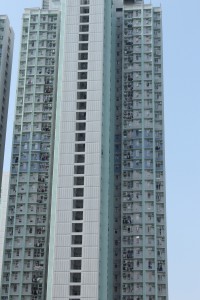 When I was here last, the Mai Po marshes were part of a wild stretch of land between Kowloon and the border with China. Now the marshes have been transformed into an entirely new area of affordable housing developments, bordered by a stretch of protected wetland which forms the Hong Kong Wetland Park. We travelled to the park by MTR and a new tram service which allowed us to take in how much the northern suburbs have changed in the 15 years since our last visit. The densely packed housing developments were huge and laundry hung from poles which were pushed out of many of the high-rises’ tiny windows. The temperature had begun to soar so it was difficult to imagine how hot the box-like flats must get.
When I was here last, the Mai Po marshes were part of a wild stretch of land between Kowloon and the border with China. Now the marshes have been transformed into an entirely new area of affordable housing developments, bordered by a stretch of protected wetland which forms the Hong Kong Wetland Park. We travelled to the park by MTR and a new tram service which allowed us to take in how much the northern suburbs have changed in the 15 years since our last visit. The densely packed housing developments were huge and laundry hung from poles which were pushed out of many of the high-rises’ tiny windows. The temperature had begun to soar so it was difficult to imagine how hot the box-like flats must get.
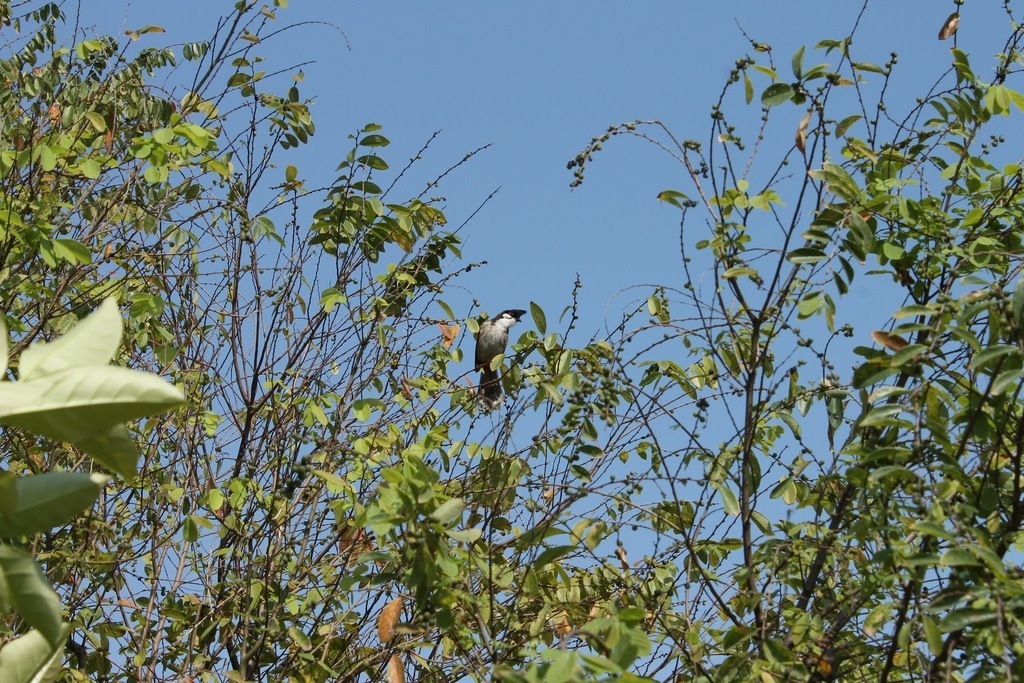 The wetland park is the main segment of open space left in the area and is a sanctuary for wild birds of all kinds. It has been cleverly marketed as a tourist attraction and the waders who have frequented the marsh for years have become its stars – viewable through bird hides, viewing platforms and high-spec telescopes. Highlights include spoonbills, the Crested Bul-Bul, kingfishers and herons.
The wetland park is the main segment of open space left in the area and is a sanctuary for wild birds of all kinds. It has been cleverly marketed as a tourist attraction and the waders who have frequented the marsh for years have become its stars – viewable through bird hides, viewing platforms and high-spec telescopes. Highlights include spoonbills, the Crested Bul-Bul, kingfishers and herons.
The sprawling megalopolis of Shenzen (mainland China) looms over the lakes in the distance, and the marshland feels like the last barrier keeping these two enormous cities from combining into one giant concrete mass.
Occupy Hong Kong
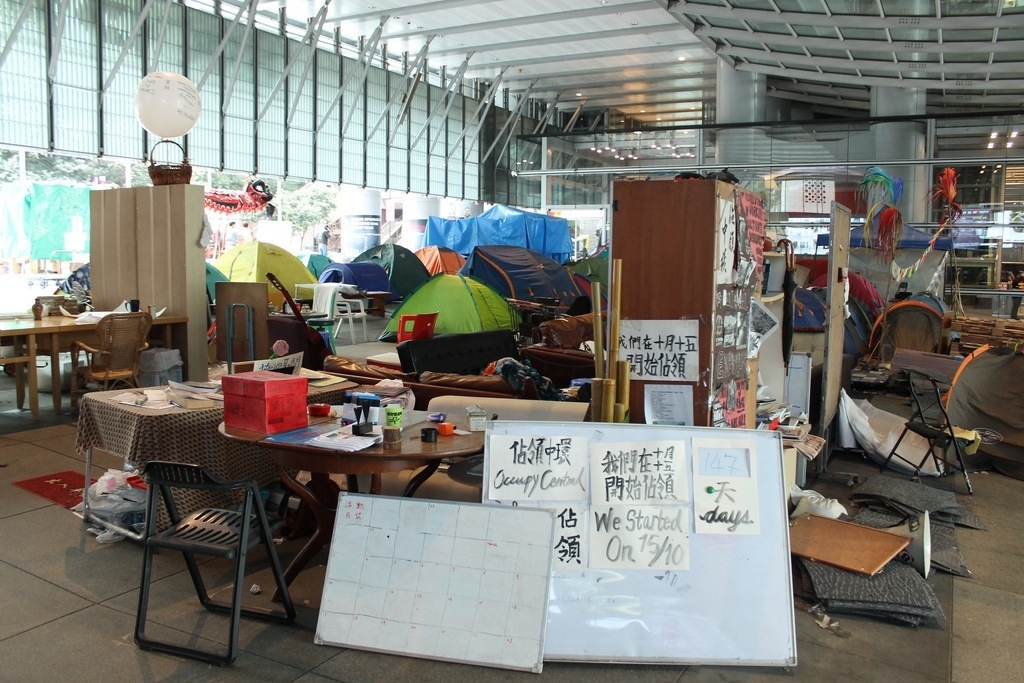
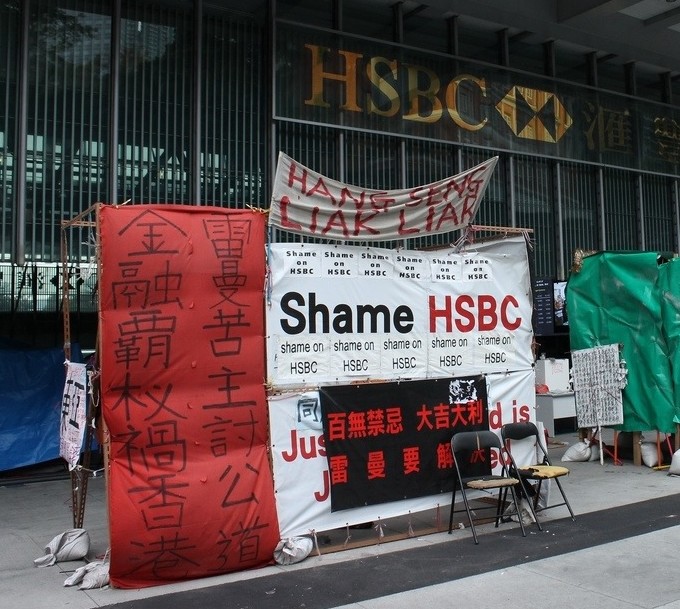 Free speech and the notion of ‘freedom’ (despite the fact that Hong Kong has never had a general election in all its existence) is defended much more strongly by the population of Hong Kong than other places in Asia. The Occupy Hong Kong group were able to camp under the concourse of one of Hong Kong’s main banks (the HQ of HSBC) for 306 days mainly due to the fact that the Legislative Council is careful not to appear too authoritarian for fear of antagonising a public that is already nervous of sweeping change. We happened to stumble across it while going from one place to another – all the activists were out apart from one guy who was looking after the camp and it was interesting to talk to some of the passers-by about their views (most were positive but one woman almost spat at the camp while repeating the word ‘disgusting’ over and over). The camp was cleared by bailiffs in September 2012 following a legal action from HSBC, but it’s interesting to note that the group’s activities were never stopped by the government themselves. Down the road, near the peak tram terminal, there is a smaller scale protest with banners and leaflets set up by a lady who believes she was abducted by aliens. Apparently, she has been there so long she is almost a feature of the landscape and there are no signs that she will be moved on anytime soon.
Free speech and the notion of ‘freedom’ (despite the fact that Hong Kong has never had a general election in all its existence) is defended much more strongly by the population of Hong Kong than other places in Asia. The Occupy Hong Kong group were able to camp under the concourse of one of Hong Kong’s main banks (the HQ of HSBC) for 306 days mainly due to the fact that the Legislative Council is careful not to appear too authoritarian for fear of antagonising a public that is already nervous of sweeping change. We happened to stumble across it while going from one place to another – all the activists were out apart from one guy who was looking after the camp and it was interesting to talk to some of the passers-by about their views (most were positive but one woman almost spat at the camp while repeating the word ‘disgusting’ over and over). The camp was cleared by bailiffs in September 2012 following a legal action from HSBC, but it’s interesting to note that the group’s activities were never stopped by the government themselves. Down the road, near the peak tram terminal, there is a smaller scale protest with banners and leaflets set up by a lady who believes she was abducted by aliens. Apparently, she has been there so long she is almost a feature of the landscape and there are no signs that she will be moved on anytime soon.
Rainbow Restaurant, Lamma Island (Pok Liu Chau)
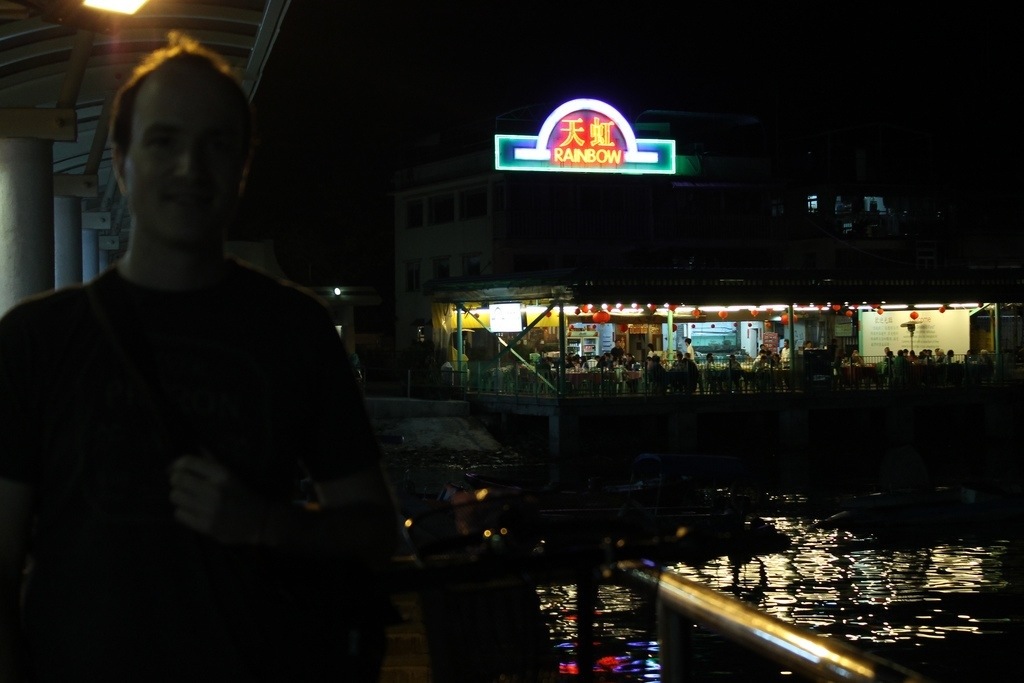 After seeing so many other aspects of the island grow out of all proportions in the last 20 years, it was heartening to find that not everywhere has been swept up by the maddening pace of change that Hong Kong’s particular brand of capitalism is famous for. A short ferry ride from Tsim Tsa Tsui or the small harbour community of Aberdeen (on the south end of the island), the island of Lamma was and still is home to a small community of local fishermen who serve up their catch of the day in their own unique style via a number of waterfront restaurants.
After seeing so many other aspects of the island grow out of all proportions in the last 20 years, it was heartening to find that not everywhere has been swept up by the maddening pace of change that Hong Kong’s particular brand of capitalism is famous for. A short ferry ride from Tsim Tsa Tsui or the small harbour community of Aberdeen (on the south end of the island), the island of Lamma was and still is home to a small community of local fishermen who serve up their catch of the day in their own unique style via a number of waterfront restaurants.
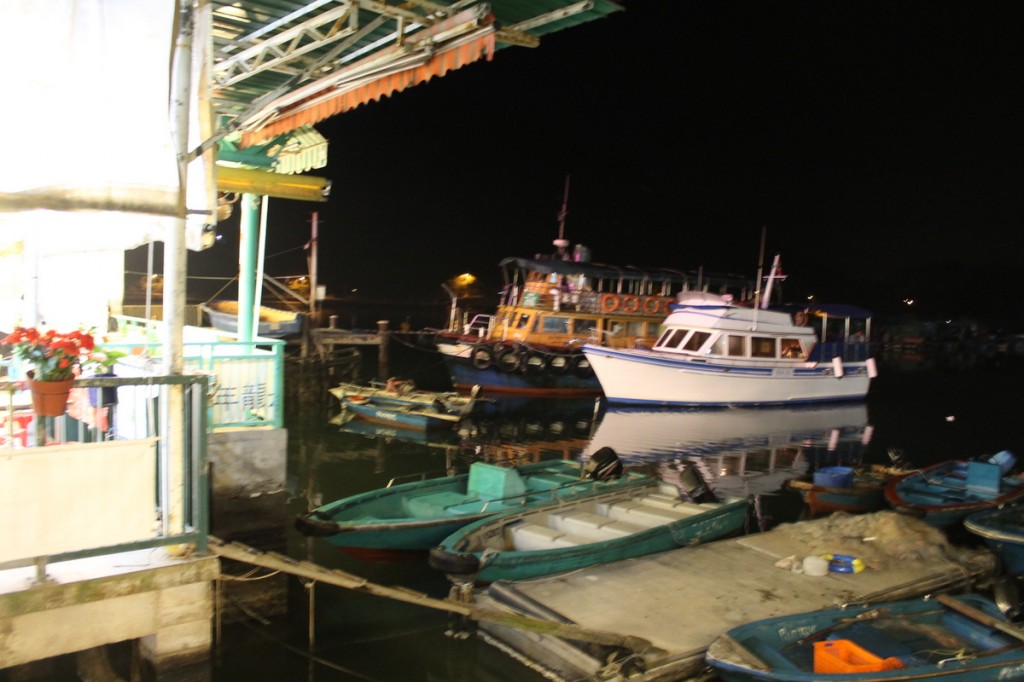 As a child, I have fond memories of frequenting the Rainbow restaurant, which I was excited to learn is still there.
As a child, I have fond memories of frequenting the Rainbow restaurant, which I was excited to learn is still there. 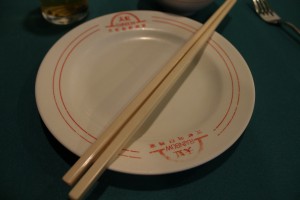 This was the first place I had returned to in Hong Kong where time really hadn’t changed it at all – the writing on the melamine plates and bowls was slightly worn but the same, almost as if they were the same plates that we had eaten off 15 years previously, the table cloths had the same familiar patterns and the food was just as fresh as I remembered. As night fell, we watched the fishing boats heading off to start fishing by the moonlight and filled ourselves with delicious rice, noodles and fish roasted with salt and a local recipe of soy sauce, garlic and plum sauce.
This was the first place I had returned to in Hong Kong where time really hadn’t changed it at all – the writing on the melamine plates and bowls was slightly worn but the same, almost as if they were the same plates that we had eaten off 15 years previously, the table cloths had the same familiar patterns and the food was just as fresh as I remembered. As night fell, we watched the fishing boats heading off to start fishing by the moonlight and filled ourselves with delicious rice, noodles and fish roasted with salt and a local recipe of soy sauce, garlic and plum sauce.
The Peninsula Hotel and the Hong Kong Cultural Centre
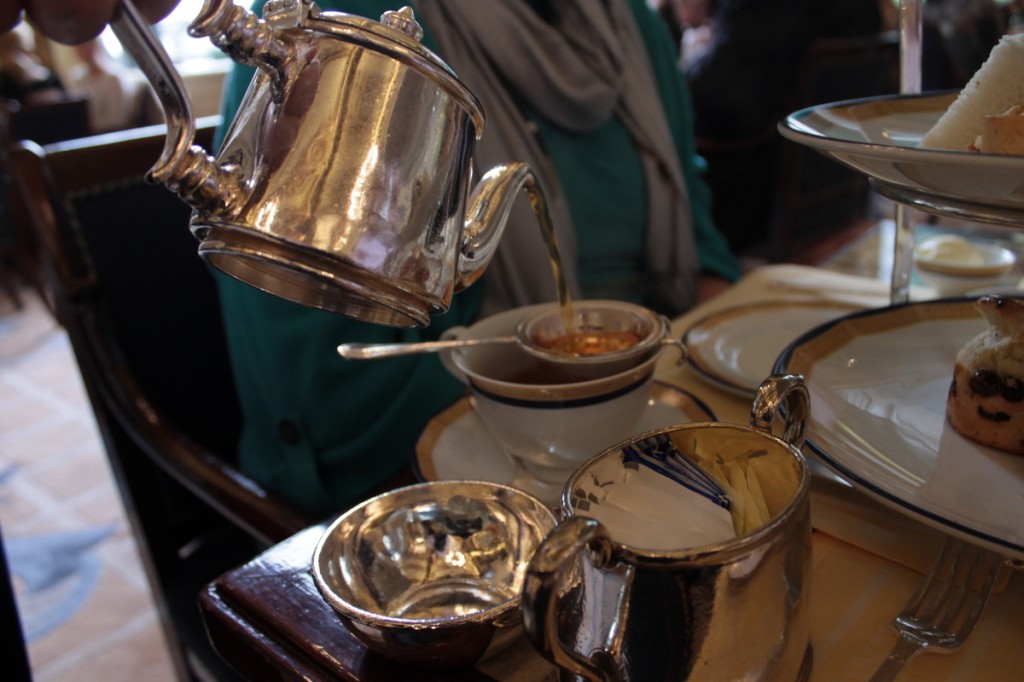 The Peninsula hotel opened its doors in 1928 and was once described as ‘the finest hotel east of Suez’. It manages to retain its elegance but is a magnet for the cruise-liner passengers who form snaking queues in the lobby for its famous afternoon tea (one family had even hired a Filipino girl to queue in their place so they didn’t have to bother!) I remember going once or twice for tea when I was younger and we were over on the Kowloon side of the harbour so we decided to have tea one quieter afternoon after visiting the nearby planetarium.
The Peninsula hotel opened its doors in 1928 and was once described as ‘the finest hotel east of Suez’. It manages to retain its elegance but is a magnet for the cruise-liner passengers who form snaking queues in the lobby for its famous afternoon tea (one family had even hired a Filipino girl to queue in their place so they didn’t have to bother!) I remember going once or twice for tea when I was younger and we were over on the Kowloon side of the harbour so we decided to have tea one quieter afternoon after visiting the nearby planetarium. 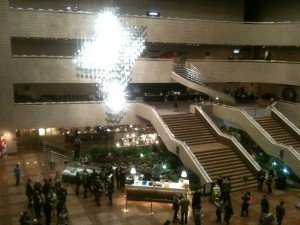 It felt strange to be back amongst tea and scones again, having bypassed most of the places that have kept up this tradition in Malaysia, but it was in some ways comforting, seeing as we were pretty sure we wouldn’t be having any more scones with strawberry jam until we were back on home turf, still a very long way away. To complete this British themed day we decided to see what was on at the Cultural Centre (which, for those who know London, feels a little bit like the Southbank centre crossed with the Barbican). We’d hoped to catch an appropriately train-themed drama ‘Railway is like a Long Winding Recollection’ but that wasn’t starting until the next week so we saw a ballet rendition of Turandot instead.
It felt strange to be back amongst tea and scones again, having bypassed most of the places that have kept up this tradition in Malaysia, but it was in some ways comforting, seeing as we were pretty sure we wouldn’t be having any more scones with strawberry jam until we were back on home turf, still a very long way away. To complete this British themed day we decided to see what was on at the Cultural Centre (which, for those who know London, feels a little bit like the Southbank centre crossed with the Barbican). We’d hoped to catch an appropriately train-themed drama ‘Railway is like a Long Winding Recollection’ but that wasn’t starting until the next week so we saw a ballet rendition of Turandot instead.
Reflections
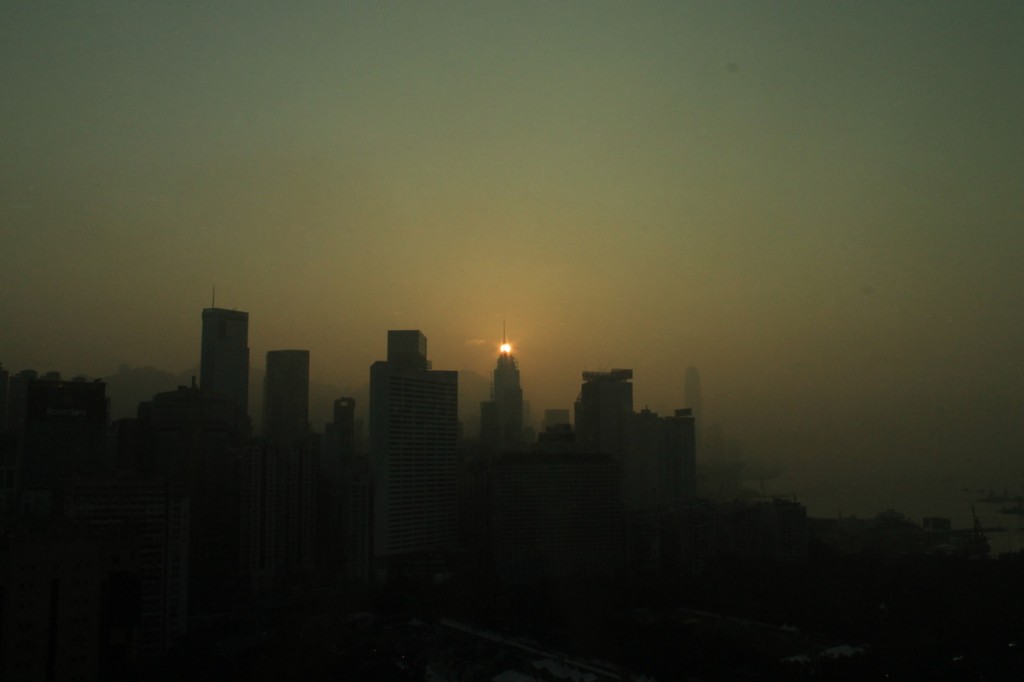 The place and culture of Hong Kong has left its imprint on my character since I lived there as a child. I was expecting a lot more to have changed, but I realised that perhaps I have changed even more than the place I once called home. Sure, there are big new buildings, a new government and a couple of square miles more harbour than when I last left its shore, but its the somewhat zany spirit of the place – with the freedom of days spent floating on junks, island exploring, sharing adventures with friends of every nationality and weathering typhoons, landslides and hill fires that have stayed with me.
The place and culture of Hong Kong has left its imprint on my character since I lived there as a child. I was expecting a lot more to have changed, but I realised that perhaps I have changed even more than the place I once called home. Sure, there are big new buildings, a new government and a couple of square miles more harbour than when I last left its shore, but its the somewhat zany spirit of the place – with the freedom of days spent floating on junks, island exploring, sharing adventures with friends of every nationality and weathering typhoons, landslides and hill fires that have stayed with me.
Our Russian and Chinese visas procured, our next journey was a voyage across mainland China to another bustling city hub: Shanghai!

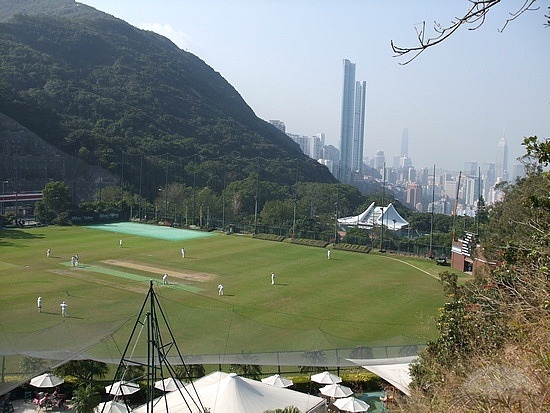
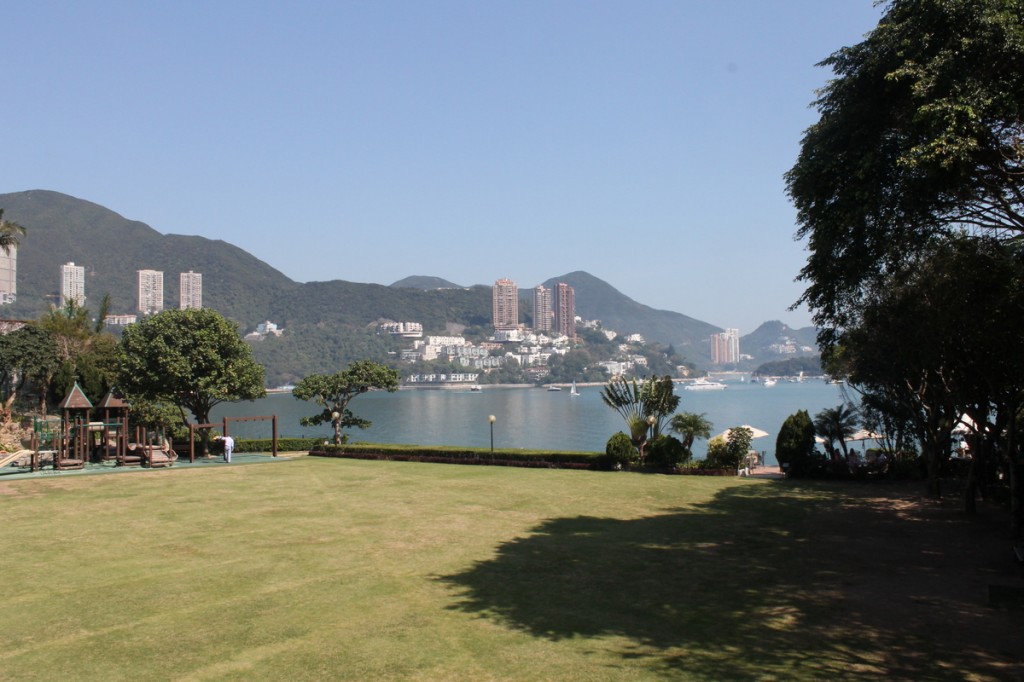
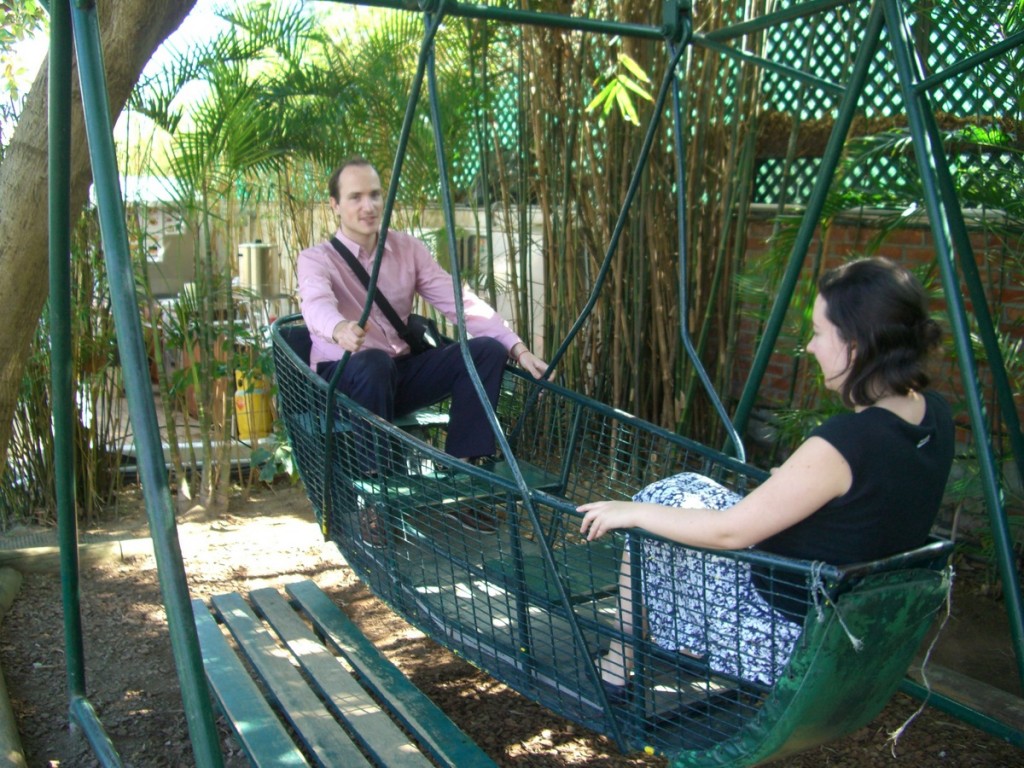
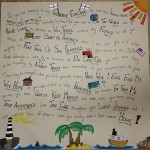
Brilliant article – it brought back so many happy memories.
Hi there – I’m an former colleague & friend of your relative – Annette. She suggested I look up your blog as I’m off to do some travelling myself and taking a 6 month period of unpaid leave from my job. I doubt I’ll be able to do it so air-fuel-free as you have but I just wanted to say I’ve really enjoyed your blog – particularly this entry as I’m starting my trip in Hong Kong and also spent my early childhood there (in the 80s)!
Hi Laura,
Thanks for the message and I’m glad you found our blog useful! I’d be interested to hear how you find going back after also living there yourself. I was surprised at how many things I found that hadn’t changed at all.
I hope you have a great time travelling, what is your planned route?